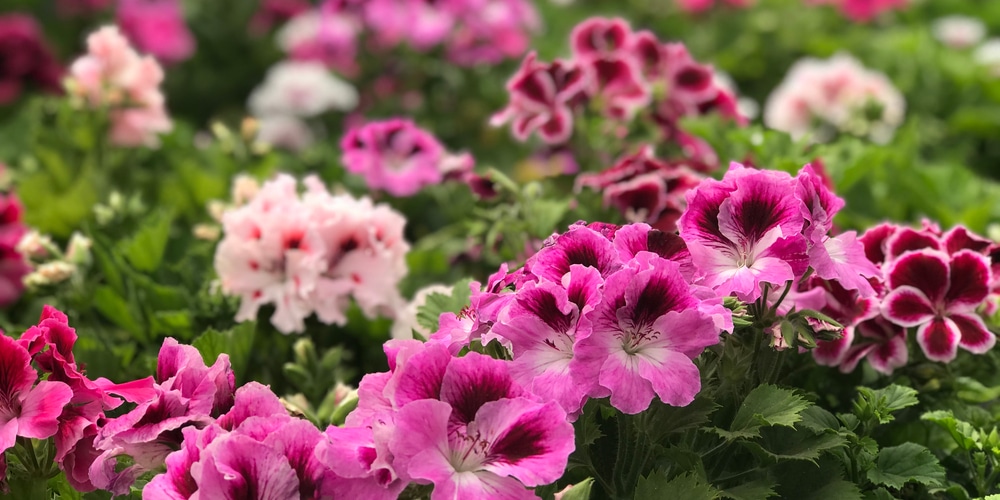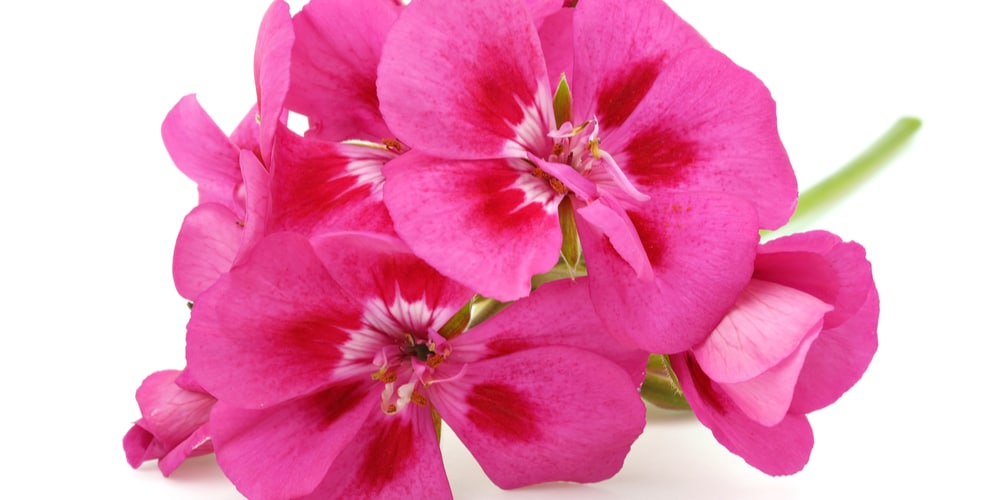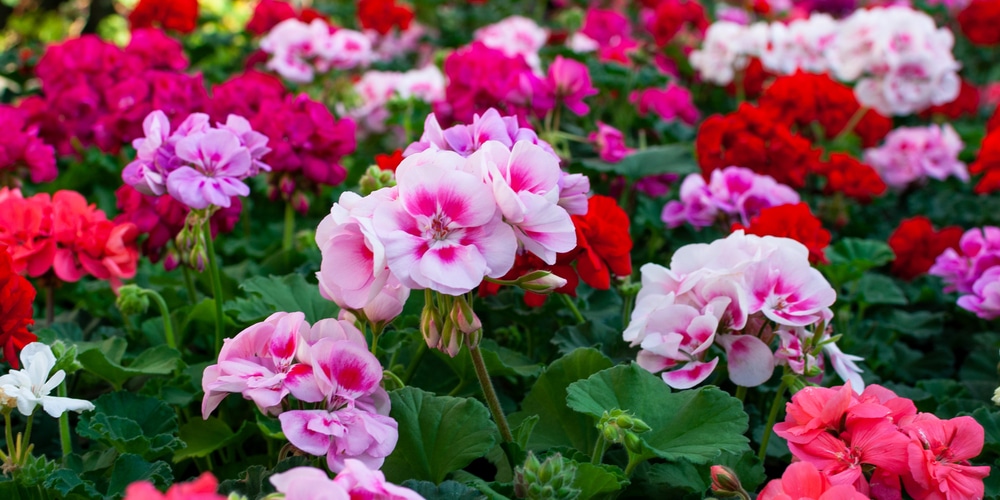Geraniums were first introduced in Europe by Dutch traders. The traders brought these lovely plants from South Africa in the early 18th century. When introduced in Europe, they resembled the wild geraniums growing in Europe. As such, botanists grouped them into the same genus.
Later, the botanists found that the new geraniums from South Africa differed from the European variety. They differed in the number of stamens and shape of their petals. As such, botanists classified them under pelargonium.

Geraniums produce showy rounded blooms that shout out from hanging baskets and window boxes. Most are modest blooming and range from 9 to 36 inches tall. They bloom in shades of lavender, pink, maroon, white, and red.
Want to grow geraniums in Seattle? In this post, we discuss when to plant geraniums in Seattle.
When To Plant Geraniums In Seattle?
Gardening is a favorite hobby for many people in Seattle. Its growth in popularity is because gardening is therapeutic, relaxing, and enjoyable. Growing and taking care of geraniums seems daunting, but it’s the opposite.
The first thing to consider is location. Geraniums thrive in locations where the sun shines for at least 6 hours a day. These plants prefer the morning sun and partial shade all afternoon.
If you choose a location that shines the full sun all day, your geraniums will not thrive. Instead, the sun will cause your plants to wither.
Seattle has many cloudy days and if you’re worried about your geraniums not getting enough light, be flexible. We recommend checking the forecast to note the sunny days.
You can grow geraniums indoors as houseplants or in your garden as annual flowers. If growing indoors, we recommend using containers with drain holes, pots, and hanging baskets. Find a spot in your home where the sun shines at least 6 hours a day. During the warmer months, keep the plant outdoors in a sunny location.
Next, take into consideration the soil. Seattle soil consists of clay and sand soil types. Sandy soil is dry, while clay soil clods when wet and becomes dusty when dry. The best option is loamy soil that retains moisture.
To know the type of soil, take some soil in your hand, and if the soil holds shape but later falls apart after squeezing it, then it’s loam. But when the soil instantly falls apart, that’s sand and if it holds shape even after squeezing it is clay.
Once you have your location and suitable soil, the next step is to plant your geraniums. Geraniums like most plants thrive in certain times of the year and climates. If planted at the right time, the geraniums will bloom into a mound of colorful flowers. However, if you fail to pick the right time, the plants will wither and die.
The right time to plant geraniums in Seattle is in spring after the last frost passes. Hardy geraniums thrive in temperate climates with cool summer nights. As tough plants, they can withstand low temperatures up to -50 F or – 45 C.
However, you should bring in the geraniums in late summer and late fall when nighttime temperatures start to dip below 55F or 13 C.
If growing geraniums, we recommend including hardy geraniums in your garden. They require very little and give a lot, especially their eye-catching flowers. Geraniums are extremely versatile, disease-free, inhibit weed, and need little care. They are easy to grow and require well-drained fertile soil.
When buying geraniums, always pay close attention to their size and color. The leaves should not have any discoloration – on or below them. Check the stems and ensure they’re sturdy and not straggly. Avoid any plants that display signs of pests. Insects that attack geraniums include:
- Fall cankerworms
- Greenflies
- Whiteflies
- Cutworms
- Cabbage loopers
- Aphids
- Slugs
Related:
When to Plant Tomatoes in Seattle
Best Geraniums to Grow in Seattle
The Ivy leaf geranium or Pelargonium peltatum excels in hanging baskets, containers, and pots. It has leathery leaves shaped like English ivy. However, the English ivy is not related to the Ivy leaf geranium.
This plant prefers moist and well-drained soil. To thrive, the plant needs morning sun and late afternoon shade. But if exposed to high heat, the leaves turn yellow. The flowers bloom in showy clusters during summer.
Next is the scented geranium or pelargonium spp. This plant has scented leaves. It produces a variety of fragrances, including mint, nutmeg, rose, coconut, chocolate, and apple. Unlike other ivy and zonal types, the scented geranium is less demanding as it needs less sun.
It produces colorful flowers and they’re not showy. To grow the scented geranium, propagate from cuttings in the spring.


